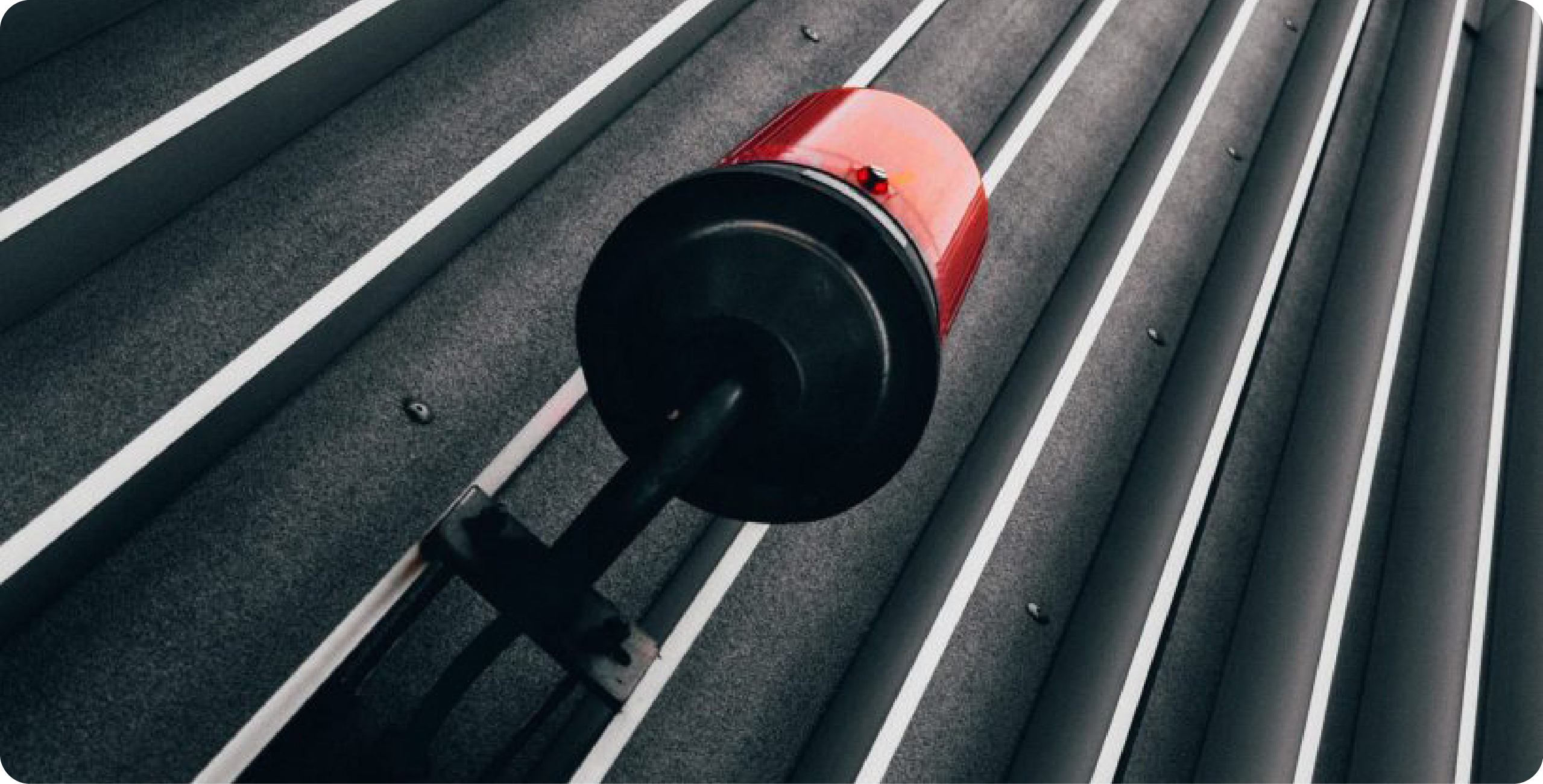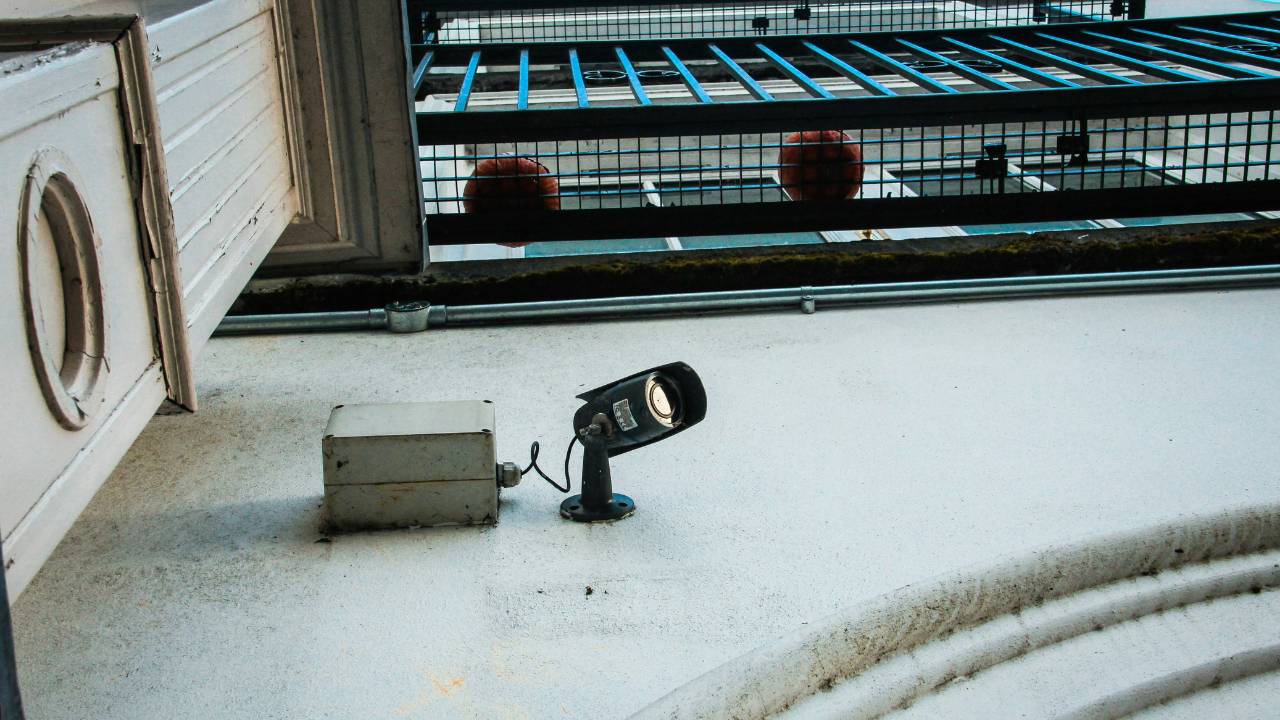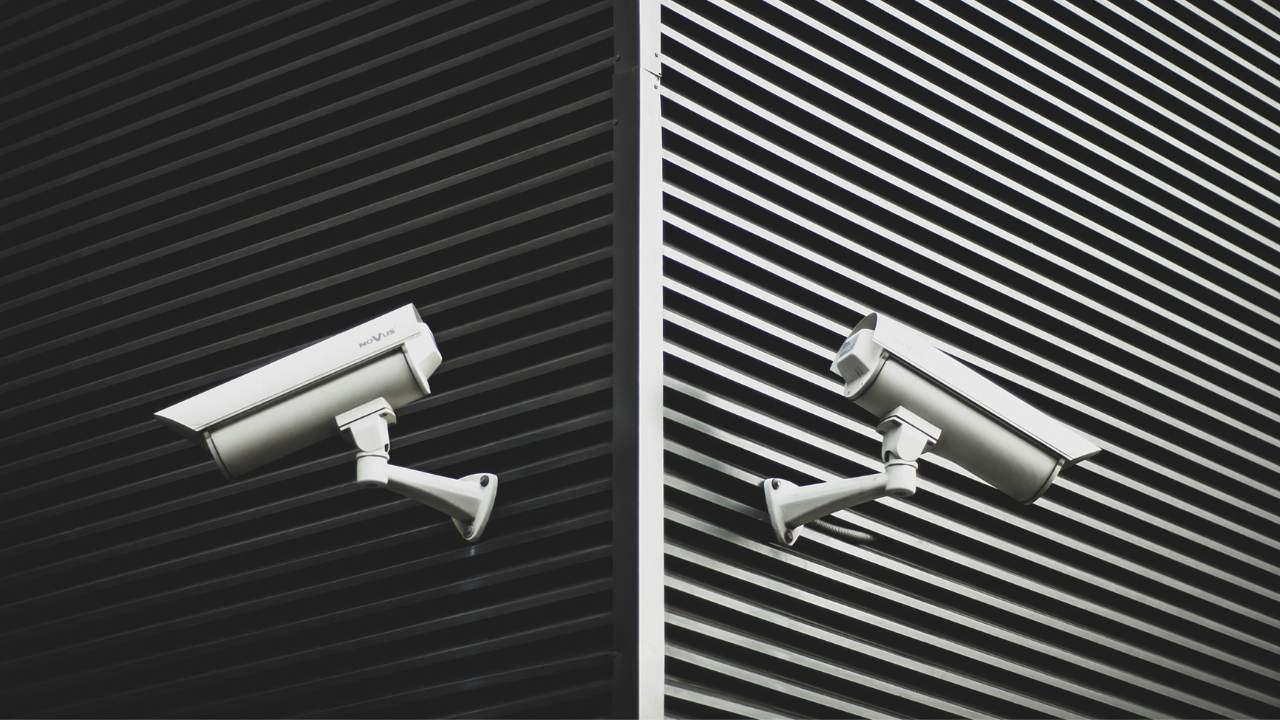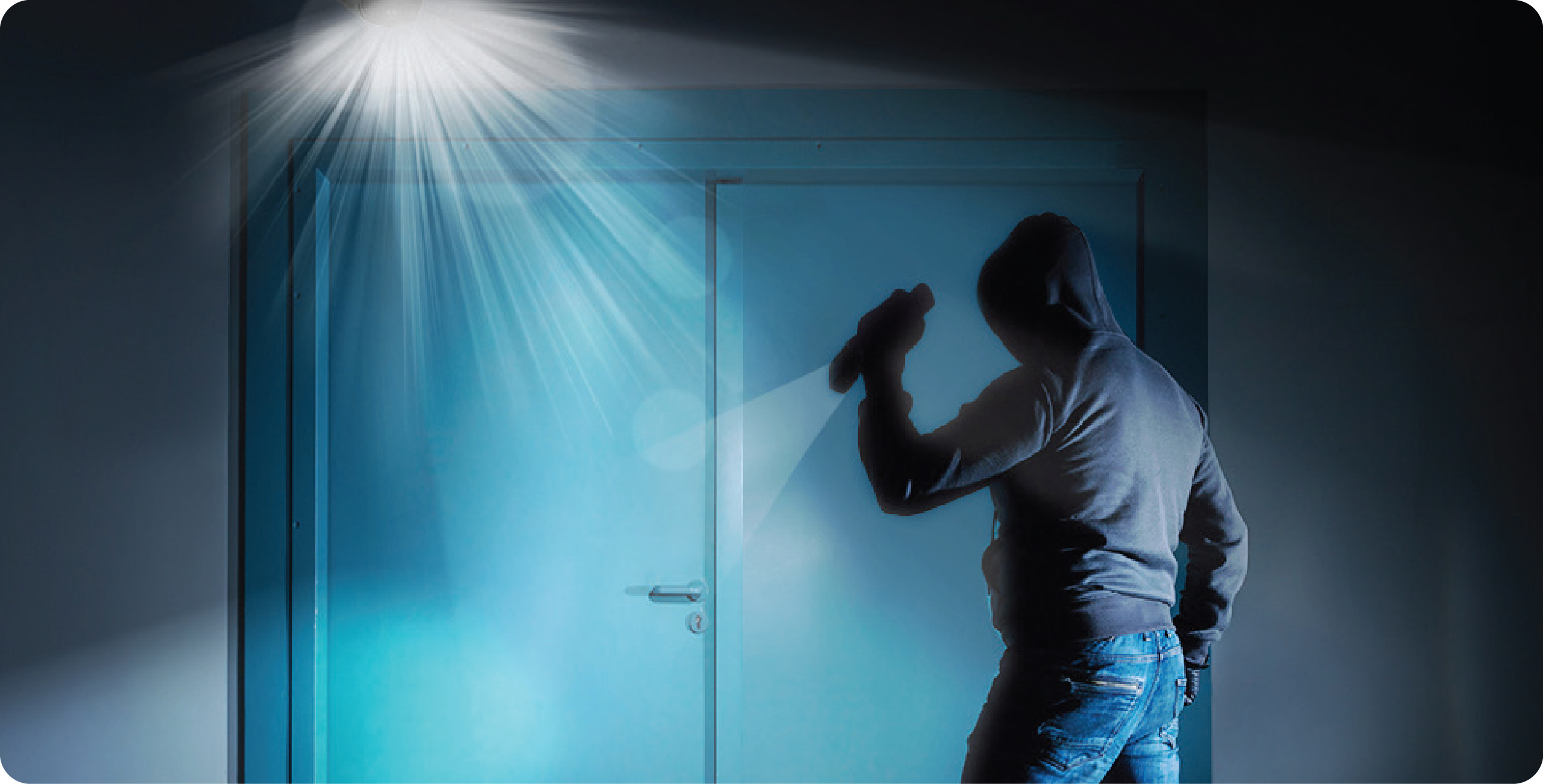Running a business in Dublin means juggling countless responsibilities. Security shouldn’t keep you up at night—yet for many business owners, the thought of break-ins, false alarms, and mounting monitoring fees does exactly that. Here’s the thing: a self-monitored alarm system might just be the game-changer you’ve been looking for.
Picture this: your alarm triggers at 2am. Instead of waiting for a monitoring station to process the alert, call you, then maybe contact the Gardaí, you receive an instant notification on your smartphone. You check your CCTV feed, assess the situation, and take immediate action. That’s the power of self-monitoring—complete control at your fingertips.
Understanding Self-Monitored Alarm Systems
What Is a Self-Monitored Alarm System?
Let’s cut through the jargon. A self-monitored alarm system is exactly what it sounds like—a security system where you, the business owner, receive alerts directly without involving a professional monitoring service. No middleman, no monthly fees eating into your profits.
Think of it as the difference between having a personal assistant screen your calls versus answering your mobile directly. When your alarm detects an intruder, the system sends notifications straight to your smartphone and anyone else you’ve designated. You’re in the driver’s seat, making decisions about how to respond.
The beauty lies in its simplicity. Modern systems like the Hikvision Alarm System have transformed what used to require complex monitoring infrastructure into something you can manage from your pocket. Your business, your rules, your response.
How Self-Monitored Alarms Work
Ever wondered what happens when that motion sensor picks up movement after hours? Here’s the breakdown.
Your alarm panel acts as the brain of the operation. When a detector triggers—whether it’s a door sensor noticing unexpected entry or a motion detector spotting movement—the panel processes this information instantly. But here’s where self-monitored systems shine: instead of routing through a monitoring station, your GSM module fires off an alert directly to your mobile.
Within seconds, you’ll receive a notification. Not tomorrow morning when you check your emails. Not after someone else has assessed whether it’s worth bothering you. Right now, when it matters.
The real magic? You can arm or disarm your system remotely, check the status while you’re in Galway for a conference, and even see which specific sensor triggered the alarm. Modern self-monitored house alarm systems give you capabilities that would’ve seemed like science fiction just a decade ago.
Self-Monitored vs Professional Monitoring: Making the Right Choice
Self-Monitored Systems: Benefits and Considerations
Self-monitoring isn’t just about saving money—though the absence of monthly monitoring fees certainly helps. It’s about maintaining direct control over your security without layers of bureaucracy between you and your property.
When you self-monitor, every alert comes directly to your mobile. You know your business better than any monitoring station operator ever could. Is that alert from the stockroom sensor likely a box that fell, or is it genuinely suspicious? You’ll make that call, literally.
But let’s be honest about the trade-offs. Self-monitoring means you’re responsible for contacting the authorities when needed. If your phone’s on silent during a crucial meeting, you might miss an alert. And holidays? Well, you’ll need to ensure someone else can receive those notifications.
Cost-wise, you’re looking at significant savings. No monthly monitoring service fees means more money staying in your business. For many SMEs in Dublin, that’s the difference between comprehensive security and… well, hoping for the best.
Professional Monitoring Services
Professional monitoring still has its place. A monitoring station operates 24/7, with trained operators ready to respond even when you’re fast asleep or your phone’s dead. They follow established protocols, notify the Gardaí or fire department according to predetermined procedures, and maintain detailed logs of every incident.
The central monitoring station approach offers peace of mind—someone else handles the 3am alarms, the false alerts, the coordination with emergency services. But this convenience comes at a price. Current Irish providers charge between €25-35 monthly, with some like HomeSecure offering monitoring from €0.99 per day (about €30 monthly).
For some businesses, particularly those handling high-value goods or operating in high-risk areas, professional monitoring remains the gold standard. Benefits of monitored alarm systems include that added layer of human verification and response.
Which Monitoring Approach Suits Your Business?
Here’s where it gets interesting. Small businesses and owner-operated shops often thrive with self-monitored alarms. Dublin’s entrepreneurial community has embraced this approach—you’re already checking your phone constantly for orders, emails, and updates. Adding security alerts to that mix feels natural.
Larger facilities, multi-site operations, or businesses with complex compliance requirements might lean towards professional monitoring. Many insurance companies accept both approaches, though some insurers offer better premiums for professionally monitored systems.
The sweet spot? Many modern systems allow you to switch between self-monitoring and professional monitoring as your needs evolve. Start with self-monitoring while you’re hands-on with the business, then transition to professional monitoring as you scale.
Essential Components of a Self-Monitored House Alarm System
Core System Components
Every reliable alarm system starts with quality components. Your alarm panel serves as mission control, processing signals from various sensors and managing communications. Modern panels are surprisingly compact—gone are the days of massive metal boxes dominating your utility room.
Motion detectors remain the workhorses of any system. Using passive infrared technology, they spot the heat signatures of intruders moving through protected spaces. Position them strategically and they’ll catch anyone trying to navigate your premises uninvited.
Door and window sensors form your perimeter defence. These magnetic contacts seem simple, but they’re remarkably effective. When a protected entry point opens, the circuit breaks, triggering an instant alert.
Don’t overlook the importance of integrating a smoke detector into your system. Fire poses just as much risk as intruders—arguably more. Having fire detection on the same platform as your intruder alarm means one app, one set of notifications, one system to manage.
And yes, you’ll still want that external siren or bellbox. While self-monitoring means you’ll know about any intrusion immediately, a blaring siren serves as a powerful deterrent and alerts neighbours that something’s amiss.
Advanced Detection Technologies
Modern sensor technology has evolved beyond basic motion detection. Dual-technology sensors combine PIR with microwave detection, dramatically reducing false alarms while maintaining sensitivity to genuine intrusions.
Glass break detectors add another layer—they’ll pick up the specific frequency of breaking glass from across a room. Particularly valuable for businesses with large shopfronts or vulnerable windows.
Pet-immune sensors let you maintain security without constant false alarms from that office cat. They’re calibrated to ignore movement from animals under a certain weight while still detecting human intruders.
Environmental monitoring deserves attention too. Water leak detectors in server rooms, temperature sensors in cold storage, carbon monoxide detectors in areas with heating equipment—these additions transform your security system into a comprehensive monitoring platform.
Communication Methods
Here’s where many older systems fall flat. Traditional alarm systems relied on landline connections—cut the phone line outside, and your monitoring capability vanished. Not exactly reassuring.
Modern GSM/GPRS modules solve this vulnerability. Using mobile networks, they ensure your alarm can always communicate, regardless of what happens to physical phone lines. Even if intruders jam one frequency, quality units switch to alternatives automatically.
The SIM card in your GSM module needs occasional attention. Set a reminder to check credit levels monthly—running out of credit at the worst possible moment isn’t ideal. Some providers offer alarm-specific SIM cards with automatic top-ups, removing this concern entirely.
Backup communication adds resilience. Some systems use your broadband connection as primary communication with GSM as backup. Others might incorporate radio transmission. The goal? Ensuring alerts always reach you.
Setting Up Your Self-Monitored Security System
Installation Considerations
Professional installation versus DIY—it’s not always a clear-cut choice. Professional installers bring expertise, ensuring sensors are optimally positioned and the system’s configured correctly. They’ll spot issues you might miss, like PIR sensors facing windows (hello, false alarms from passing headlights) or entry sensors with too wide a gap.
Keypad placement matters more than most people realise. You want it accessible enough for easy operation but not visible from windows where someone could watch you entering codes. Multiple keypads make sense for larger premises—one near the main entrance, another by the back door.
Your existing security infrastructure might offer integration opportunities. Already have CCTV? Many self-monitored systems can trigger camera recording when alarms activate. Alarm systems vs CCTV systems shouldn’t be an either/or decision—they complement each other brilliantly.
Configuration and Customisation
Setting up smartphone notifications requires attention to detail. You’ll want immediate push notifications for actual alarms but might prefer simple logs for routine events like system arming/disarming.
Create an alert hierarchy that makes sense. Perhaps you receive all alerts, your business partner gets intrusion alerts only, and your manager receives notifications when the alarm isn’t set by closing time. Modern systems handle multiple users effortlessly.
Response procedures need documenting. When an alert arrives, what’s your process? Check CCTV first? Call the premises? Drive there yourself? Having a clear plan prevents panic responses at 3am.
Testing isn’t glamorous but it’s crucial. Walk-test every sensor monthly. Trigger the system deliberately to ensure notifications arrive promptly. Check backup batteries. A self-monitored system only works if you maintain it properly.
Smart Features and Remote Control
Your smartphone becomes your control centre. Arm or disarm the system from anywhere—forgot to set the alarm after that hectic afternoon? No problem. Check the status while lying in bed wondering if you remembered to secure the premises.
Integration with smart home devices opens interesting possibilities. Link your alarm to smart lighting so triggered sensors illuminate the affected area. Connect to smart locks for truly integrated access control.
Remote monitoring extends beyond simple arm/disarm functions. View event logs to spot patterns—is someone repeatedly testing your defences? Monitor battery levels, signal strength, and system health remotely.
Some systems offer geofencing capabilities. The alarm automatically arms when you leave the vicinity and sends reminders if you return without disarming. It’s these thoughtful features that transform security from a chore into seamless protection.
Maximising Security with Self-Monitored Systems
Creating an Effective Response Plan
A self-monitored system is only as good as your response to its alerts. Start by establishing clear protocols for different scenarios. Alarm activation during business hours likely indicates a fault or staff error—easily verified with a quick call. After-hours alerts demand more careful consideration.
Develop a contact cascade. You might check CCTV first (if available), then call the premises. If you can’t verify it’s a false alarm, having the local Gardaí station’s non-emergency number saved helps. Building a relationship with your local community Garda can prove invaluable—they’ll appreciate knowing you’re a responsible business owner who won’t waste their time with false alarms.
Staff training prevents most headaches. Everyone needs to know the alarm code (but consider individual codes for accountability), understand the entry/exit procedures, and know whom to contact if they accidentally trigger the system. A laminated instruction card by each keypad works wonders.
For businesses with multiple keyholders, WhatsApp groups or similar can coordinate responses. “I’m handling the alarm activation at 22:47” prevents three people racing to the premises unnecessarily.
Preventing False Alarms
False alarms destroy confidence in your system faster than anything else. After the third false alert in a week, you’ll start ignoring notifications—defeating the entire purpose.
Common culprits include helium balloons triggering motion sensors, spiders building webs across PIR lenses, and staff forgetting to disarm before entering. Each has straightforward solutions: ban balloons from areas with sensors, schedule quarterly sensor cleaning, and implement strict entry procedures.
User code management prevents issues. When staff leave, delete their codes immediately. Regular code changes might seem excessive, but it’s easier than explaining to insurers why a former employee’s code was used during a break-in.
Environmental factors cause surprising numbers of false alarms. That poster that keeps falling off the wall? Secure it properly. The blinds that flutter when the heating kicks in? Adjust them. A few minor modifications can eliminate most false alarm sources.
Enhancing Your Self-Monitored System
CCTV verification transforms your response capability. When an alarm triggers, immediately checking camera feeds tells you whether it’s a genuine intrusion or the cleaner arriving early. Having CCTV cameras installed at your business premises provides this crucial visual confirmation.
Access control integration creates comprehensive security logs. Knowing who entered when, combined with alarm events, builds a complete picture of your premises’ security. It also simplifies management—one platform controlling alarms, access, and potentially CCTV.
Environmental monitoring often gets overlooked but proves invaluable. That server room temperature sensor might save you from catastrophic equipment failure. Water leak detection in basements prevents thousands in damage. These additions typically cost little but provide significant value.
Modular systems allow gradual expansion. Start with basic intrusion detection, add CCTV verification when budgets allow, then perhaps integrate access control. Your self-monitored system grows with your business.
Cost Analysis: Self-Monitored Alarms Dublin
Initial Investment Breakdown
Let’s talk real numbers from the current Irish market. Installation prices have become incredibly competitive, with major providers offering promotions starting from just €49. However, these are typically entry-level packages requiring monthly monitoring contracts.
For a genuine self-monitored system without ongoing fees, expect to invest €499-699 for a complete package suitable for a small retail unit. This typically includes your alarm panel, 4-6 sensors, keypad, external siren, and crucially, the GSM module for smartphone notifications.
Larger premises naturally cost more. A warehouse might need 15-20 sensors, multiple keypads, and possibly beam sensors for large open areas. Commercial installations can reach €4,000 or more, depending on complexity and coverage requirements.
HKC represents one of the most popular brands in the Irish market, offering reliable equipment with excellent local support. Their self-monitored systems balance features with affordability, explaining their prevalence across Dublin businesses.
Ongoing Costs and Savings
Here’s where self-monitoring truly shines. Professional monitoring services in Ireland currently charge €25-35 monthly, with some providers like Securigard requiring 5-year contracts. Over five years, you’re looking at €1,500-2,100 in monitoring fees alone—potentially exceeding your initial system cost.
Self-monitored systems might charge a small app fee (Securigard charges €85 annually), while others include app access free. GSM costs remain minimal—expect to spend €20-50 annually on SIM card credit for alarm communications.
Maintenance should include annual service calls—budget €100-150. This covers battery replacement, sensor cleaning, and system health checks. Skipping maintenance is false economy when a failed sensor could mean missing an actual intrusion.
Don’t forget the intangibles. No contracts mean no exit fees if you relocate. No price increases at renewal time. No arguing about excessive false alarm charges. The savings extend beyond simple monthly fees.
ROI Comparison
Comparing self-monitored systems against professional monitoring reveals compelling economics. With installation costs from €499-699 and minimal ongoing expenses, self-monitoring typically pays for itself within 18-24 months compared to professionally monitored alternatives.
Consider HomeSecure’s €0.99 daily rate (approximately €30 monthly). After two years, you’ve spent €720 on monitoring alone—exceeding the entire cost of many self-monitored systems. Factor in installation fees, potential callout charges, and contract penalties, and the financial advantage becomes clear.
Hidden costs matter too. Professional monitoring often charges for callouts, even for false alarms. Password resets might incur fees. Moving premises? Expect hefty relocation charges. Self-monitored systems avoid these gotchas entirely.
The value of immediate notification shouldn’t be underestimated. While monitoring stations follow protocols, they still need time to process alarms, verify them, and contact you. Self-monitoring eliminates these delays—every second counts during genuine intrusions.
Meeting Insurance and Compliance Requirements
Insurance Standards for Alarm Systems
Good news from the insurance front: Irish insurers increasingly recognise self-monitored systems, particularly for standard commercial risks. Major providers like Aviva offer 12.5% discounts for approved alarm systems, while AA Insurance provides similar reductions for NSAI-approved installations.
Your system needs proper certification. EN50131 grading indicates European compliance, with Grade 2 suitable for most commercial premises. Insurers want to see professional installation certificates and evidence of regular maintenance—whether monitored professionally or self-monitored.
Documentation proves crucial. Keep installation certificates, service records, and component specifications. When renewal time arrives, demonstrating your security investment often yields premium reductions. Industry research suggests discounts typically range from 10-20%, though this varies by insurer and risk profile.
Some insurers might specify monitoring requirements for high-risk businesses or valuable stock. However, they’re increasingly recognising that self-monitored systems with smartphone alerts provide comparable protection to traditional monitoring.
Regulatory Compliance
Irish security regulations focus on system quality rather than monitoring methods. Your installer should provide appropriate certification confirming compliance with relevant standards.
Fire safety integration requires attention. Commercial premises must maintain adequate fire detection—linking this to your intruder alarm system makes sense. Systems monitoring both intrusion and fire from one platform simplify compliance while enhancing protection. The importance of having a fire alarm extends beyond mere compliance—it’s about protecting lives and livelihoods.
Data protection considerations apply when recording CCTV footage or maintaining access logs. Self-monitoring actually simplifies GDPR compliance—you control all data without third-party processors accessing your security information.
Industry-specific requirements vary. Financial services might mandate particular security levels. Healthcare facilities have unique considerations. Retail chains might need corporate standards met. Research your sector’s specific needs early in the planning process.
Choosing the Right Self-Monitored Alarm for Your Business
Business Type Considerations
Retail security presents unique challenges. Customer flow during trading hours, valuable stock displays, and cash handling all demand careful consideration. Your self-monitored system needs zones you can isolate—perhaps keeping stockrooms armed while the shop floor remains accessible.
Office environments prioritise perimeter security and out-of-hours protection. Motion sensors in corridors and stairwells, contacts on fire escapes, and perhaps vibration sensors on windows containing valuable equipment. The considerations when choosing a CCTV system apply equally to alarm planning.
Industrial facilities need robust solutions. Harsh environments demand appropriate sensor ratings. Large spaces might benefit from beam sensors rather than standard PIRs. Integration with existing safety systems—emergency stops, fire suppression—requires careful planning.
Multi-site businesses find self-monitoring particularly attractive. Centralised alerts from all locations to key personnel, consistent interfaces across sites, and no multiplied monitoring fees make compelling arguments. Cloud-based platforms let you manage multiple locations from one dashboard.
Feature Prioritisation
Start with essentials. Reliable intrusion detection, smartphone alerts, and battery backup form your foundation. Everything else enhances rather than replaces these core capabilities.
Scalability matters more than you might think. That small startup might become a medium enterprise sooner than expected. Choosing systems that grow with you prevents expensive replacements later.
Integration capabilities future-proof your investment. Can the system work with Morley IAS fire panels? Will it interface with LogiFire or Comelit Fire Alarms? Planning for integration beats retrofitting every time.
Consider your facility management checklist requirements. How does the alarm system fit within broader facility management? Self-monitored systems often integrate better with building management platforms, providing unified oversight.
Professional Support for Self-Monitored Systems
When to Seek Professional Help
DIY has limits. Complex premises layouts, integration requirements, or compliance needs often justify professional involvement. There’s no shame in recognising when expertise adds value.
System design consultation prevents expensive mistakes. Professionals understand coverage patterns, identify vulnerable points, and recommend appropriate equipment. They’ll spot the obvious issues—like that proposed sensor placement that’ll trigger whenever the heating activates.
Ongoing maintenance needs vary by system complexity. Annual professional servicing ensures everything operates correctly, batteries get replaced proactively, and any firmware updates get applied. Consider it like car servicing—preventive maintenance beats emergency repairs.
Troubleshooting support saves frustration. When you’re getting false alarms at 3am, having someone knowledgeable to call makes all the difference. Many installers offer telephone support even for self-monitored systems.
MJ Flood Security’s Approach
Local expertise matters in security. Dublin’s unique challenges—from weather patterns affecting sensors to understanding local response times—benefit from area knowledge. National companies might offer competitive prices, but local support proves invaluable when issues arise.
Flexible monitoring options acknowledge that one size doesn’t fit all. Starting with self-monitoring but retaining the option to upgrade to professional monitoring provides peace of mind. Business needs evolve—your security should too.
Professional installation services ensure your self-monitored system performs optimally. Proper sensor placement, correct configuration, and thorough testing make the difference between effective security and expensive frustration.
Ongoing support availability distinguishes quality providers. Effective security strategies for small and medium businesses often depend on having reliable technical support when needed.
FAQs About Self-Monitored Alarm Systems in Ireland
Can a self-monitored alarm system meet my insurance requirements?
Most insurers accept self-monitored systems for standard commercial risks. You’ll need proper certification (EN50131 Grade 2 typical for commercial premises), professional installation documentation, and evidence of regular maintenance. Major insurers like Aviva and AA Insurance offer discounts of 10-12.5% for approved systems. High-risk businesses or those with valuable stock might face additional requirements. Always check with your insurer before installation—requirements vary between companies and can change. Getting written confirmation prevents nasty surprises at renewal time.
What happens if my phone is off when the alarm is triggered?
Modern systems handle this intelligently. Most send alerts to multiple numbers—perhaps you, your business partner, and a trusted employee. If one phone’s unreachable, others receive the alert. Push notifications queue, so you’ll see missed alerts when your phone reconnects. Email alerts provide backup, and some systems offer escalation—if nobody responds within set timeframes, they’ll try alternative contacts. The key lies in proper configuration during setup.
How reliable are GSM-based alarm notifications?
Extremely reliable with proper setup. GSM modules use dedicated alarm SIM cards, often with priority network access. They’ll work anywhere with mobile coverage—which covers virtually all of Dublin and urban Ireland. Quality units support multiple networks, automatically switching if one’s unavailable. Power cuts don’t affect them (battery backup), and unlike broadband, they’re unaffected by cable faults. Industry sources describe notification delivery as “instant,” though exact timing varies by network conditions.
Can I upgrade from self-monitoring to professional monitoring later?
Absolutely. Quality alarm systems support both monitoring methods. The hardware remains identical—you’re simply changing where alerts go. Most installers can arrange professional monitoring activation within days. Some offer hybrid approaches—self-monitoring normally but professional monitoring during holidays. This flexibility means you’re never locked into one approach.
Do self-monitored systems work during power outages?
Yes, properly installed systems include battery backup. Industry standards require 10-24 hours of backup power, with most systems providing “up to 24 hours” according to manufacturers. The GSM module has separate battery backup, ensuring communications remain active. Your router might lose power (affecting app access), but GSM alerts continue working. Extended outages might require generator backup for critical businesses, but standard battery protection handles normal interruptions.
What’s the typical response time for notifications?
While providers describe notifications as “instant,” specific timing depends on several factors. Professional monitoring stations claim response times of 15-35 seconds. For self-monitored systems sending direct GSM notifications, alerts typically arrive very quickly—though exact speeds vary by network conditions and phone settings. The key advantage is eliminating monitoring station processing time.
Can multiple people receive alarm alerts?
Yes, and this flexibility surpasses traditional monitoring. Configure unlimited alert recipients—you, partners, keyholders, or trusted employees. Set different alert types for different people. Perhaps you receive everything while your manager only gets actual alarm activations. Temporary additions work too—add your brother’s number while you’re holidaying, remove it upon return.
How do self-monitored systems handle fire detection?
Brilliantly, actually. Connecting fire alarm systems to your intruder alarm creates unified protection. Smoke detectors trigger the same immediate alerts as intruder sensors. You’ll know instantly about fire detection, can verify remotely if you have cameras, and respond appropriately. For businesses, this integration often satisfies fire safety requirements while simplifying system management.
Takeaway
Security shouldn’t be complicated. Nor should it drain your budget with endless monthly fees. Self-monitored alarm systems put you in control—immediate alerts, remote management, and significant cost savings compared to traditional monitoring.
Every Dublin business faces unique security challenges. Whether you’re protecting a boutique in Temple Bar or securing a warehouse in Ballymount, the right self-monitored system adapts to your needs. No cookie-cutter solutions, no unnecessary features—just effective protection that works for your business.
The question isn’t whether you need security—it’s whether you’re ready to take control of it. Professional installation ensures optimal performance. Quality components provide reliable protection. But ultimately, you decide how to respond, when to upgrade, and what matters most for your business.
MJ Flood Security understands that transition. Some businesses thrive with complete self-monitoring. Others prefer professional backup during holidays. Many start with self-monitoring and evolve as they grow. Whatever your journey, local expertise and flexible solutions make the difference.
Ready to explore your options? Questions about specific requirements? Need guidance on choosing an intercom system to complement your alarm?
Take the first step towards smarter security. Call 01 689 6390 for a no-obligation consultation, or submit an enquiry form here. Your business deserves security that works as hard as you do.











